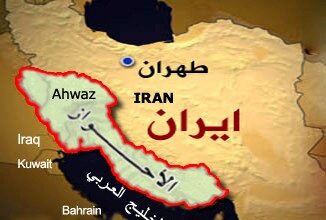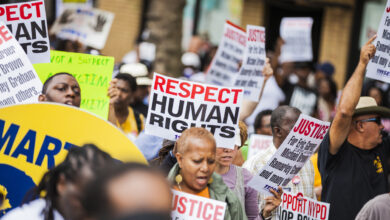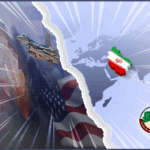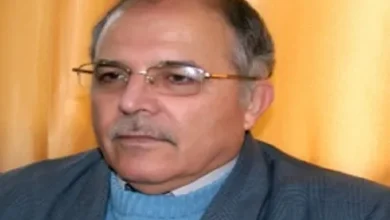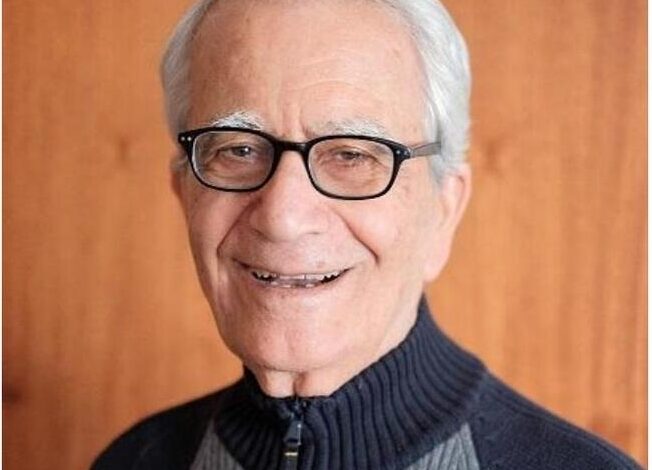
The Iranian role in Yemen – part one
The Zaydi Imams ruled Yemen for one thousand and a hundred years, the last of whom was Imam Badr bin Ahmed bin Yahya, who was overthrown in 1962 by Field Marshal Abdullah Al-Sallal. Yemen has been ruled by six presidents since that time (until 2012, when Ali Abdullah Saleh, who had ruled since 1978, stepped down.
This preamble must be said that the Yazidi authority (the Jaroudi school) represented by Sheikh Badr al-Din al-Houthi has grieved in himself the loss of the Mutawakkil Kingdom, which was an extension of the rule of the Imams from the descendants of Zaid bin Zain al-Abidin (Ali bin al-Hussein bin Ali Abi Talib). Thus, he began to think about how to return the glory of the rule of the Yazidi Imams, even though most of the six presidents mentioned above were from the Yazidi sect. With the Iranian Revolution in 1979, his eyes turned towards it. However, the obstacles in front of him were twofold: ideological, i.e., the doctrinal differences, and the support of Ali Abdullah Saleh for Iraq during the war.
Let’s stop for a moment to address the sectarian difference. Sayyid Muhammad Hassan al-Amin says that “Yazidis are a sect of non-Imami Shiite Muslims who do not believe in the twelve Imams after the Prophet Muhammad and the awaited Imam Mahdi. The Zaydis meet with the Shiites in the Imamate of Ali and his two sons, al-Hasan and al-Husayn. Then, Ali ibn al-Husayn (who is Imam Zayn al-‘Abidin), and then the Imami and Zaydi Shi’a separate from the children of Imam Zayn al-‘Abidin, where the Shiites consider Imam Muhammad ibn Ali ibn Ali ibn al-Husayn (Muhammad al-Baqir) to be the legitimate Imam after Imam Zayn al-‘Abidin, and Zaydis consider that the legitimate Imam is Zaid ibn Ali ibn al-Husayn ibn Ali ibn Ali Abi Talib, who revolted against the Umayyads and was killed in it. They consider the Imams to be from the Zayd dynasty, rather than being the descendants of Imam Muhammad al-Baqir. As for what divides them, the rest of the Imams are the Zaydis, starting from Zaid bin Ali bin Al-Hussein to Imam Badr, who ruled Yemen in the early sixties, i.e., the descendants of Zayd, the son of Imam Zayn al-Abidin, in addition to the issue of the important dispute between them about the “Mahdi Al-Muntazar (1).
It is also useful to point out that Iran’s rapprochement with Badr al-Din al-Houthi has gone through two phases, the first since 1990-85 and the other since 1990 until the Houthis entered into Sana’a in September 2014. Some studies indicate that the establishment of the Union of Faithful Youth in 1982 AD is the first nucleus of the organizational framework that embraced the Houthi movement in its Algerian phase, and this union had an organizational educational program (a course on the Iranian Revolution and its principles). It. This was Badr al-Din al-Houthi, who taught this subject in admiration and reverence for the Iranian Revolution as a heavenly gift to save Muslims. In 1988, Tehran received two of the most prominent young people who were enthusiastic about this ideology, who then took over the task of establishing the first organized entity of this movement, and the body on which Hussein Badr al-Din al-Houthi led his rebellion, and after him his brother Abdul Malik al-Houthi, with the clear complicity of the regime of Ali Abdullah Saleh and a subsequent alliance with this group to take revenge on the Yemenis who revolted against his rule. They met with Khomeini, Ali Khamenei, and Hashemi Rafsanjani, Azzan acknowledged after falling out with the Houthi family and defecting from them. After 1990, the two men returned to revisit Iran, accompanied by Muhammad Muftah and Al-Murtada al-Mahtouri, two of the most prominent proponents of Imami thought, marking the beginning of the organization’s public activities. And with this activity, Badr al-Din al-Houthi returned from Qom to Saada, and inaugurated seminaries to spread forward-thinking ideas and recruit followers. By teaching his new ideas about Zaydiyyah, he ended up controlling and imposing curricula according to his ideas and according to the following mechanisms:
1. Establishing permanent religious centers. In these forums and seminaries, the youth, most of whom were young, received an extremist sectarian education based on purity and the right to rule, and they persevered to watch films about the fall of the Shah’s regime in Iran and how the Khomeini Revolution took place.
2. Establishment of independent summer centers
3- Reviving religious occasions and rituals that were not celebrated by Zaydis before, such as Eid al-Ghadir, Ashura Day, and Karbala Day.
4. The slogan of the cry was the first to be repeated by Hussein Badr al-Din al-Houthi. The first appearance of the slogan was in January 2000 at the Al-Hadi school in the Maran area, after a lesson entitled (The cry in the face of the arrogant. The truth of this slogan was used by Khomeini from his exile in France against the Shah through what was known at the time as the Revolution of slogans and tapes. Later, the slogan became specific to the Houthi ideology, and the guarantee of God is great, death to America, death to Israel, curse on the Jews of victory for Islam>>. It. They began to be recited after the five prayers, especially after the Friday prayers in the large mosques in the provincial capitals. They reached the Great Mosque in Sana’a, as it was chanted collectively on the rooftops of houses or in the streets and alleys (2).
Hussein Badr al-Din al-Houthi was diligently active, moving between tribes in villages and districts to give lessons, where he would comment on the news. He would move the Al-Jazeera channel after hearing it from the attendees. He used to review recorded videos of Iranian youth during the Iranian Revolution being tortured, and then comment on them by provoking the audience against the injustice inflicted on Iranians or the people of Saada and Yemenis by the darkness, referring to the existing system of government in Yemen, which many researchers have interpreted as All of this shipment contained in the lieutenant’s reference (Hussein al-Houthi’s pamphlets) was aimed at preparing and preparing to jump on Upper Egypt and the existing system, and a desire to expand and control the whole of Yemen, which he actually sought later. (3) Here, let us go back a little bit to 1990, when the war with Iran had stopped, Khomeini was dead, Khatami (the moderate) came, and most of all, on 22/5/1990, the two parts of Yemen were united. The. Most unity was accompanied by many political measures, according to which the door was opened wide for the establishment of parties, associations, publications, and the dissemination of ideas and doctrines, which made the followers of Zaydis take the initiative to take advantage of this new situation and establish some parties, bodies, and newspapers. Most calls for the Shiite ethnicity began to emerge. Decade and nostalgia for the former Imami monarchy, and in the wake of the decade, some of their scholars, preachers, and students began to head to Iran and return to spread their ideas throughout Yemen. The sequel in the second part, with God’s help.
Sources:
1- Lebanese newspaper An-Nahar, April 20, 2015
2- With a simple disposition, one of the most famous Islamic groups in Yemen, Abdul Salam Al-Salmi, Master’s Thesis, Presented by Al-Azhar University, Faculty of Islamic Da’wah, 2007, Fourth Semester (The Faithful Youth Group (Houthis).
3- From an article, How the Houthis in Yemen are confronting Faisal bin Ali Al-Baadani, ” on the Marib Press website
Iran’s Role in Yemen – Part Two
The Houthis have been quick to issue some newspapers, publications, and cultural bodies, including:
1- Al-Shura newspaper: The spokesman of the Union of Popular Forces, headed by Mohammed bin Yahya Al-Madani.
2- Al-Umma newspaper, the spokesman of the Al-Haq Party, and its editor-in-chief is Mohammed bin Yahya Al-Mansour.
3- Al-Balagh newspaper, headed by Abdullah Ibrahim Al-Wazir.
Despite their limited circulation, these newspapers played a role in promoting the Houthis’ doctrine by attacking Sunni scholars from various streams, such as Sheikh Abdul Majeed al-Zindani and Sheikh Abdul Wahab al-Daylami, and responding to articles published in Sunni newspapers and magazines that targeted the Salaf and the Brotherhood.
In addition to the newspapers published by the Zaydis in Yemen, they were interested in publishing and distributing several Persian Shi’ism magazines published outside Yemen, such as:
1. The world, which is exported by Iran.
2. Al-Noor, which is issued from London by Al-Khoei Foundation, and supervised by Iraqi Shiites.
In addition to newspapers and magazines, they had a clear presence in Sana’a Radio, and they were also inviting their supporters to follow Tehran Radio, under the pretext that it was the only radio station that did not broadcast songs.
After 1990, the Zaydis took the initiative to significantly enter the Yemeni political arena, where they were allowed to establish parties. Within a short period of time, the Al-Haq Party was established as a political front for the (secret) Faithful Youth Forum.Hussein Badr al-Din al-Houthi entered the House of Representatives along with his comrade in the leadership of the secret organization, Abdullah al-Razami, as the party’s representatives from Saada governorate, and at the end of the summer war of 1994, Badr al-Din al-Houthi decided to return to Qom, due to disagreements over the party’s performance and the harassment of the Saleh regime, after accusing him of allying with his opponents, and as soon as the parliamentary elections were held in 1997, Al-Razami and Hussein lost Most of the influential people in the Imami movement turned to the Faithful Youth Forum, the secret framework for work, and continued to attract young people to the seminaries, which are supervised by Badr al-Din al-Houthi, until their attendance reached 15,000 young people in 2000. The forum was supported by the Ali Saleh regime, which was pursuing a policy of hitting religious groups and political currents against each other, and an annual budget was allocated from the revenues of the endowments for the forum, which was receiving personal sponsorship from Yahya al-Mutawakil, the most prominent aides and advisors to President Abdullah Saleh.
During the 1990s, hundreds of Yemeni youth were sent to Iran and Lebanon to receive military, intelligence, and technical training in the field of media, the establishment of private communications networks, and the manufacture of explosives. According to the confessions, which were recorded in the trial sessions of the crews of two Iranian arms smuggling ships and activists in the group, they would arrive in Damascus, and from there they would be transferred to Iran without stamping their passports so that the authorities would not be informed of their entry into Iran. Others were also entering Beirut to receive various training in Hezbollah-controlled areas in the south and the southern suburbs, by experts from the party and with the participation of Iranian intelligence officers. It is also worth mentioning that during this period, hundreds of scholarship students continued to be sent to Iran to study religious sciences, whether in an official capacity or by the Houthis movement. These ideological cadres carefully formed the basis of the Houthis’ movement’s infrastructure after their return from Iran.
The Six Wars Phase 2004-2010:
This is the stage in which the Houthis turned from an intellectual, educational group to an armed group rebelling against the existing republican system (because, in fact, its intellectual belief does not see its legitimacy at all), and the group fought six direct wars with the existing regime from 2004 to 2010. This stage ended with the end of the sixth war in February 2010, which was followed by the shift to peaceful negotiations for regional and international reasons, especially since the Houthis began to change to new areas within Saudi Arabia, and Tehran was closely monitoring what was going on in Saada province of fierce battles, with which it realized the extent of the losses suffered by the Houthis following Saudi Arabia’s entry into the midst of the confrontations, which pushed Iranian politicians to mobilize their regional and international relations to put pressure to stop the war, which was manifested by Tehran’s interest in various forms and different levels, to the extent of the intervention of the Iranian president, who expressed his alarm over Saudi Arabia’s bombing of the Houthi group members in Saada, the same attention he paid to the success of the signing of the agreement to stop the war in Qatar, through a visit by Nejad to Doha the day immediately after to be assured of the success of his efforts to stop the war, and during this stage, it was expanded after the killing of Hussein Badr al-Houthi in the 2004 war. The expansion included the governorate of Al-Jawf, Marib, and Harf Sufyan in Amran, where the Houthis reached within the governorates, specifically the Hashid tribe. Ahad infiltrated the governorates’ meeting of the Hashid tribes in Khamar in October 2010, and succeeded in pledging to eradicate the Houthis. The tribes pledged to waste the blood of those who try to belong to the Houthis, after violent clashes between the Houthis on the one hand, and huge crowds on the other. The Houthis reached the outskirts of the capital, Sana’a, in the Bani Hashish area. They managed. The goal was to subdue many tribes that were opposed to the Houthis’ expansion and agenda.
In the third part, we discuss the period from 2010 to 2014, during which the Houthis took control of Sana’a.
Sources
1- Yemeni Strategic Report 2010, issued by the Yemeni Center for Strategic Studies. 2- What do you know about the Houthis and the war in Sa’ada, Ali Al-Sadiq, I, II, 1433 AH,
3- The Houthi movement in Yemen, the Safavids’ gateway to the land of the Two Holy Mosques. Dr. Abdulaziz Al-Ghamdi, I, I, 1439 A.H.
Iran’s Role in Yemen – Part Three
We have already shown that the Houthis worked under the banner of the Believing Youth Union (within the principle of taqiyya) before the establishment of unity in 1990. Then, the Al-Haq Party was established as a political front through which it contested successive parliamentary elections under the guise of the General People’s Congress (the ruling party in Yemen), gaining influence, presence, and a foothold within its ranks. In the process, an is then used. In 2012, with the beginning of what became known in political circles as the Arab Spring, the “Umma Party” was announced and publicized as a political front for the Houthis. The establishment of this party was in response to the urging of some Western officials to the Houthis to establish a political and democratic party for them, after their order in Yemen was exposed as the owners of an Iranian project. It has been said that the announcement of this party is an attempt to penetrate and fragment the Yemeni Revolution with an agreement between the authority and the Houthis, so their interests coincided with those of the Yemeni authority in aborting and destroying this Revolution.
The members of the so-called “Faithful Youth” worked to expand their popular base and strengthen their internal and external relations, solidifying their ties with the Yemeni president at the time. The government printed its curricula in its institutions and forums in Yemeni textbook presses as a political goal to strike a balance with the rest of the sects, such as the Sunnis and Zaydis, who disagree with the so-called Union of Faithful Youth. They have become openly communicating with the Iranian embassy in Sana’a, and its cultural attaché in particular. The generous government
Tehran, through its embassy and through other intermediaries in Shiite institutions and associations in some Arab Gulf countries, the Levant, and Iraq, has had a significant impact on the separation from the “Haq Party. The moment of separation between the believing youth and the Al-Haq Party can be considered as the turning point and the complete subordination by the Houthis to the ruling regime in Iran, and to engage in its ideological, political, and military project in the Arab and Islamic countries. This “believing youth” organization has become Iranian-minded par excellence, as the literature of Khomeini’s thought and the Lebanese Hezbollah have become its intellectual and media engine. They also became known as “Ansar Allah” (in 2011), and this name comes in the style of the Lebanese Hezbollah, raising the same flag.
Throughout his tenure, President Ali Saleh was dancing on the rope of maneuvers, sometimes fighting the Houthis fiercely when the Brotherhood (Islah Party) and the rest of the Salafi and Sunni parties were standing by him, and sometimes throwing his weight with the Houthis to confront the Sunni parties and tribes allied with them. Therefore, all Yemenis were not aware of the coordination movement that was taking place between the Shiite movement in the north and their relatives in the south, including the leaders of the Yemeni Socialist Party and the leaders of the League, i.e. the League of the Sons of the South before the Yemeni unification (1990) and the League of the Sons of Yemen after that. This harmony and coordination were embodied as strongly as possible in the 1994 war between Badr al-Din al-Houthi and Ali Salem al-Bayad, which ended with a military campaign that destroyed the house of the Houthis. This was displaced to Lebanon and then to Iran, and he declared his allegiance to Khamenei. He was considered the guardian of the Muslim world. Bayad
Returned to Yemen in 1997, after mediation and petitions with the former president of the republic.
In light of the weakness and absence of the state, and everyone’s preoccupation with working to make the youth Revolution of change a success in Yemen, the Houthis openly joined the call to achieve the demands for the secession of the unified Yemeni state, which is the call adopted by separatist leaders through suspicious names, such as: the Supreme Council of the Movement headed by Ali Salem Al-Bayad, who visited Iran repeatedly and became the spoiled boy for it at this stage and who does not respond to his request. Not only did the two parties agree to call for secession, but coordination and alliances were in full swing at various political, media, and field levels, and the arming of the Hirak to destabilize security and stability and impede the completion of the presidential elections, which Yemenis agreed upon internally and were blessed by regional and international powers.
The Houthis rejected the Gulf initiative, and the early presidential polls ought to thwart it, following the February 11, 2011, Revolution, and did not recognize the legitimacy of the new president. They were intended to be Abd Rabbu Mansour Hadifor and began to organize. They were designed marches and revolutionary demonstrations. They are denouncing the peace process. Consequently, the power of the Houthis has increased. In September 2014, the Houthis took control of Sana’a. They stormed the headquarters of the First Armored Division, led by Ali Mohsen al-Ahmar, and the headquarters of the adjacent Al-Iman University. They took control of security institutions, camps, government ministries, and essential facilities in the center of the capital without resistance from the security forces, encountering and arresting key personnel, including those in the army. Following this, the troops signed the peace agreement and a national partnership between the Houthis and other political components. [8] The control of Sana’a was followed by battles in Ibb, Hodeidah, and al-Bayda with the militias of the Islah Party, and the Ansar Allah group (the Houthis) was accused of violating and obstructing the peace and partnership agreement and the outcomes of the National Dialogue Conference.
Sources:
1- Iran and the Houthis, Ahmed Amin Al-Shuja, First Edition, 1434 A.H., Research Center
Studies, Al-Bayan, Riyadh
2- The Houthis in Yemen between Politics and Reality, Aida Al-Ali Sari Al-Din, I,
The first, 1410 A.H., Dar Bayan, Beirut
The Houthis are the weapon of the sect and political loyalties, Dr. Ahmed Al-Daghshi
Iran’s Role in Yemen – Part Four
As we finish highlighting the situation in Yemen, we must draw attention to several facts that we conclude in light of what has been mentioned in the previous parts
First: In fairness to the late Ali Abdullah Saleh, it must be said:
1- He had honorable positions on the issues of the nation, especially on the Iraq-Iran war, the documents revealed that he had concluded contracts worth millions of Iraqi dollars in his name to buy heavy weapons that Iraq supplied in its grinding war with Iran, and this behavior was a circumvention of the international laws that were approved to prevent Iraq and Iran from importing weapons. By importing heavy weapons and supplying them to Iran (which, with these missiles, was crushing Baghdad and its people)
2- The late Ali Saleh is recorded for his historic achievement of achieving unity between the two parts of North and South Yemen through a brilliant maneuver, which is to fight the communist influence in South Yemen, and this is what makes America happy. Second: The strong alliance between Ali Salem Al-Beidh (Marxist-Leninist) and the Houthis (Persian Shiite political Islam) to break the bonds of unity between North and South Yemen indicates the divisive approach of the Arab nation that has characterized the behavior of the Arab Communists since the unity of 1958 between Egypt and Syria until now. In support of the unity of the German nation led by Bismarck, and also contradicted the position of Lenin himself, who cherished the Russian nation and loved its language. Therefore, it has been proven practically and concretely that world imperialism (and the Zionist entity, of course) does not only stand against the unity of the nation, but is joined and supported by the Arab Communists (Russia’s tails in the region), along with Sunni political Islam and Persian Shiite Islam (Iran’s tails in the region).
Third: What factors helped the Houthis succeed in reaching power?
The truth is that there are subjective and objective factors.
Subjective Factors:
1- The spread of illiteracy in the Yemeni governorates, which sometimes exceeds 75%, in addition to the spread of poverty and destitution.
.
2- The preoccupation of the tribes with each other in ongoing disputes in those governorates is an essential factor to work quietly among their sons and attract them with the Houthi ideology.
3- Buying loyalties and fueling the factors of revenge among the tribes.
4. Claim of grievance
5- The six wars have become a blackmail card.
6- The regime at that time abandoned the support of the tribes loyal to it, which made them frustrated and dispersed in the face of the Houthi tide.
7- Political support, whether from politicians who support them, from alliances with leftist forces that are interested, or those who have previous grudges with the regime.
8 – Giving money and buying the receivables of many tribe members, politicians, and media personalities to gain loyalties. Through zakat or khums, including support from the Iranian embassy, which in the years 2000-2001-2002 amounted to about (twenty-two million, three hundred and eighty-one Yemeni riyals), some of which were allocated to cultural and sectarian awareness courses.
Objective Factors:
1- Ali Abdullah Saleh stood by the Houthis, who provided large units of the army with their camps and weapons to the Houthis, as experts indicate that 90% of the Houthis’ weapons are from the Yemeni army.
2- Iranian support: Iran did not provide light and heavy weapons to the Houthis because it was available, as Yemen is a forest of weapons that are sold in the streets, what Iran has provided is logistical support and advanced weapons such as drones and long-range missiles, and sending high-ranking officers and military experts to supervise the battles in planning and execution, so that the Houthis have vast quantities of weapons hidden in the mountains of Yemen, and therefore they have withstood this steadfastness since 2015 until now. Decisive Storm is facing not only the former Yemeni army, but thousands of well-trained Houthi fighters.
3- It was in the interest of the United States and the European countries to keep the fire of war burning in Yemen to increase the blackmail of Saudi Arabia, whose security has become threatened at the core, along with the United Arab Emirates.
In summary, Iran’s focus on Yemen aims to isolate Saudi Arabia from Bahrain and the rest of the Gulf countries in the future, so that their fall into the Iranian grip will be achieved.

